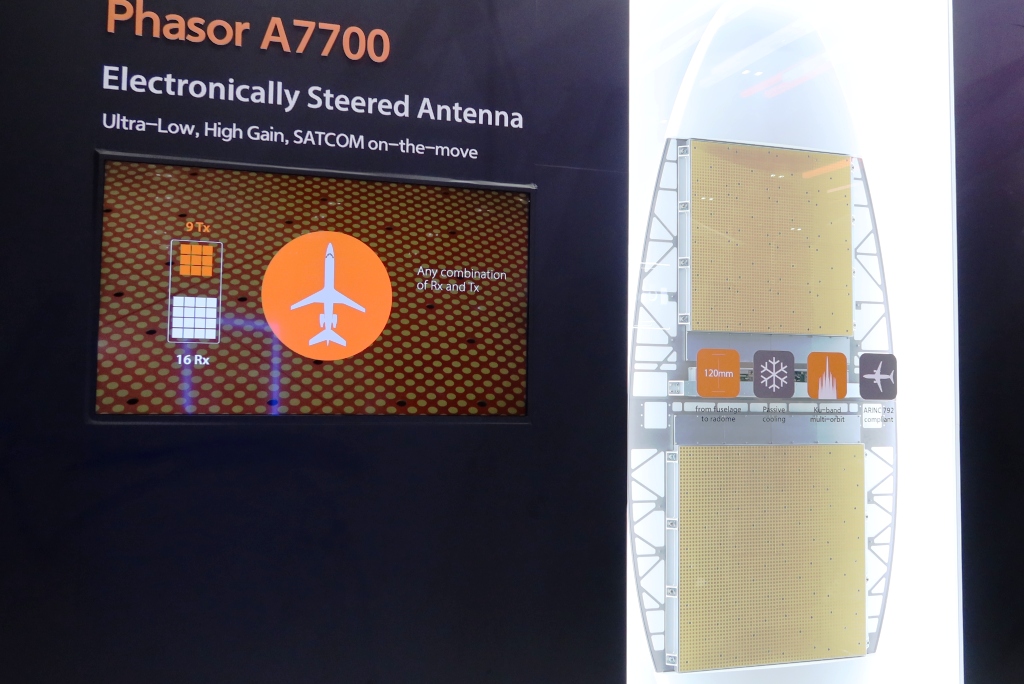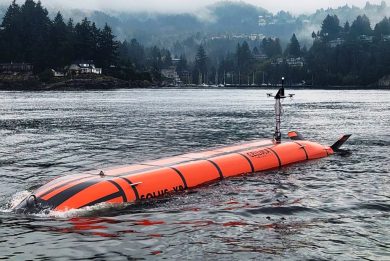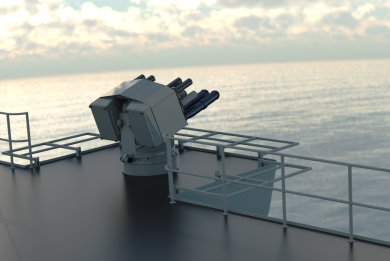
DSEI 2023 – Hanwha Phasor details A7700 phased array and OneWeb relationship
Hanwha Phasor has presented its Phasor A7700 phased array antenna and announced a partnership with OneWeb that will see the Phasor A7700 qualified for use on the OneWeb constellation of 600 Low Earth Orbit (LEO) satellites, at the DSEI 2023 exhibition in London
The antenna has been designed to provide high reliability- enterprise grade satcom on the move capabilities that have multiple applications from enabling streaming on commercial flights, through to robust communications in austere environments for military and first responder users, Michael Young, vice president of business development said. The design presented at DSEI was built for a commercial airliner, however “the design is modular and scalable. Its use of small square tiles means that the antenna can be built to the size of a platform – from a howitzer like the K9 to a ship or airliner,” he added.
It is a Ku band antenna with two dual simultaneous receive channels and one send channel. “This makes it resilient to jamming and interference as the antenna can rapidly switch channels or satellites to maintain connectivity,” Young explained. Furthermore, once the antenna is certified for use on OneWeb satellites the company will be able to offer a service guarantee, which means that the data rates offered to clients will be guaranteed.
“We expect qualification for ground users to be completed by the end of next year and initial production to start around the same time,” Young said. Hanwha Phasor has partnered with Plexus, a contract manufacturer with sites in the UK for production of the antenna, which will de-risk production and provide options for scalability, Young added. The first deliveries of the system to customers are also expected at the end of 2024, qualification for the commercial airliner version is scheduled for the year after to account for airworthiness requirements.
The Phasor A7700 builds on the earlier work of Phasor, a UK-based company that was procured by Hanwha in 2020. “Hanwha invested over £90 million in us, which meant we could hire the best talent in the industry and the best engineering equipment to develop our system,” Dominic Philpott, Chief Operations Officer of Hanwha Phasor told EDR on 12th September.
“The original phased array design required cryogenic cooling, which increased the space, weight and power requirements”, Philpott explained. Hanwha Phasor has subsequently redesigned it to eliminate this requirement and the current design has a height of 120 mm and can be configured into a number of configurations depending on the use case.
Phased array antennas are important developments as the world moves towards large constellations of satellites for the provision of internet and telecommunications. As the beams from the antennas are electronically steered, they are able to communicate with multiple satellites at once, which improves their ability to receive data from multiple sources. The rapid steering speed is also essential in keeping up with LEO satellites that orbit the earth at a speed of 7.8 km/s, but it also enables the antenna to communicate with geostationary satellites, too.



